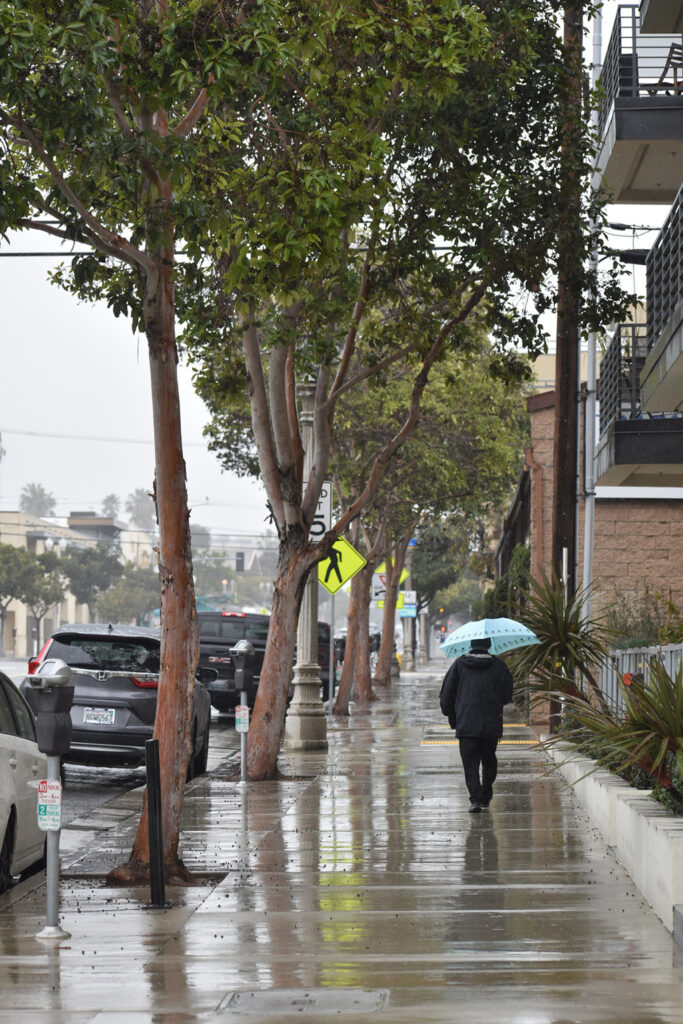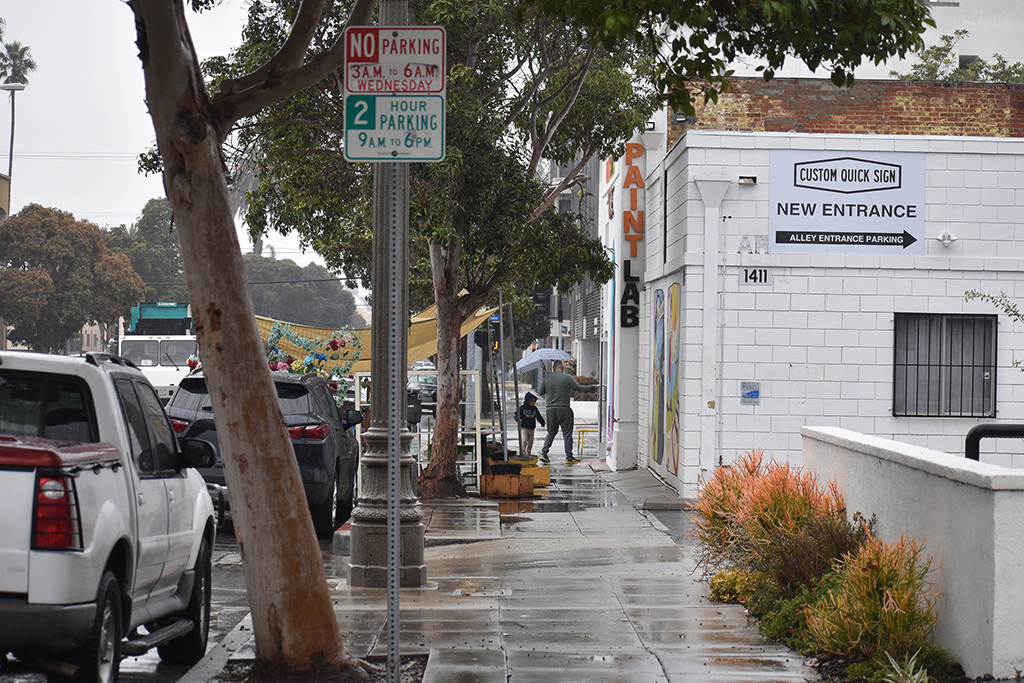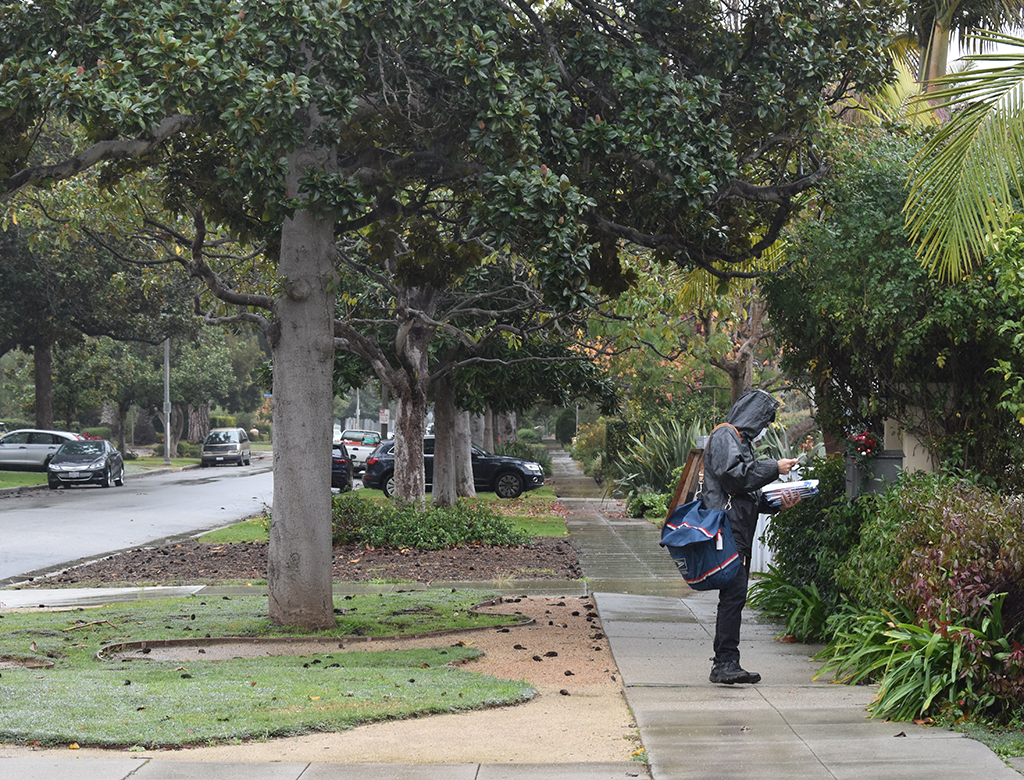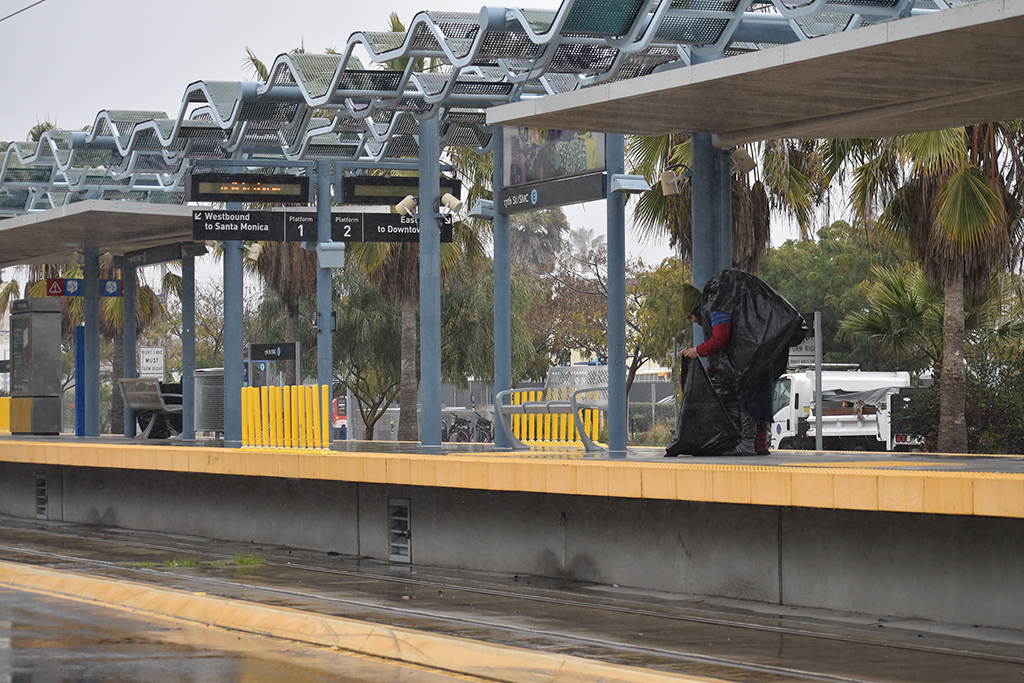Rainwater may be pouring through Santa Monica’s storm drains, but the precious resource is running straight into the ocean, not into the city’s thirsty groundwater basin.
Despite Santa Monica’s astronomical rainfall over the past 31 days, the persistent drought is not yet a thing of the past, according to City of Santa Monica Water Resources Manager Sunny Wang.
“Two big rain events doesn’t mean we’re out of the woods. You know, if you look at where we are—between a wet year and a severe dry year, with this rain event, we’re actually right in the middle right now,” Wang said in a recent interview with the Daily Press. “So, the next two months are actually very critical. If it continues to rain like this, then we’ll be in good shape. But if it doesn’t, [if] it just stops, then we might start going down to that drought position again. So, we’re kind of right in the middle right now.
“It’s nothing to get excited about,” Wang continued. “It’s great. We want rain, but the drought is definitely not over yet.”
Wang and Santa Monica sustainability analyst Tom Fleming spoke to the SMDP to describe how Santa Monica’s water is sourced, how drought and recent rain affect the supply, and programs in place to help residents and businesses cut back on use.
While approximately 29 percent of Santa Monica’s water is imported from the Metropolitan Water District of Southern California, which is sourced from the State Water Project or the Colorado River, another 50 percent comes from local groundwater sources. That means that even while the Sierra snowpack and reservoirs around the state swell, the city’s primary water source is much slower to show the effects of a single rain event.
According to Wang, the groundwater supply is measured in five- to 10-year cycles, wherein local agencies evaluate the sustainability of the amount of groundwater sourced from particular wells. The good news is that the city’s current draw is considered sustainable.
“Water being recharged in the basin doesn’t happen overnight; it happens over decades,” Wang described. “Groundwater movement could be anywhere from months to years. So, we have to look at it in terms of a longer period for groundwater, but … we are within our sustainable yield limits in our groundwater production.”
As for the snowpack, Wang said that climate change has diminished how reliable the snowpack can be as a measure of future water supply; essentially, snow that’s measured in the winter can melt and evaporate away to nothing before it ever makes it into an aquifer.
Wang recalled a briefing the California Department of Water Resources provided to Southern California water agencies around the middle of 2021. According to the agency, last winter’s snowpack had virtually disappeared when the spring thaw came.
“When they went out in April this year to survey the snowpack, they had about 70 percent of normal. They were like, ‘Oh, that’s not too bad, 70 percent of normal and summer’s coming.’ But when they went back in May, I want to say it went down to like 10 [or] 15 percent of normal,” Wang recalled. “Because of how dry and hot [it was] and how quickly it heated up over that one-month period, the ground was so dry that when the snow melted, instead of making it to … rivers and waterways that ultimately end up in our reservoirs, it all just seeped into the ground and evaporated. So, all that snowpack was not captured into our reservoirs. It melted.”
U.S. Drought Monitor maps that show data captured through Dec. 28 showed that most of L.A. County had moved from D3 “extreme drought” to the slightly-less-grim D2 “severe drought” conditions, proof that the drought was easing across the state; however, there were no regions of California not in drought.
“Even with the rains, using the science and the U.S. Drought monitor’s scale, the entire state is still in some form of drought,” Fleming pointed out.
What does that mean for Santa Monica’s residents and business owners going into 2022?
According to Wang, water rates themselves will not increase; however, the Metropolitan Water District may decrease the allotment of water it sells to Santa Monica at the standard “Tier 1” price. Instead of raising the price of water, the suppliers reduce the standard amount allocated to customers (meaning municipalities), and any water purchased above the allocation is sold at a higher, “Tier 2” price.
Wang contrasted the payment model to that of a gas station, which raises prices based on supply and demand. Water prices cannot go up even when supply is down, Wang described, but as resources diminish, less becomes available and “Tier 1” allocations diminish. Wang also pointed out that, due to Prop 218, which passed in 1996, water is sold essentially at-cost, with no profits coming in from the sale.
Fleming detailed the many City resources available to residents who wish to cut back on household water use, including incentives to switch to more water efficient appliances and rain barrel rebates.
“We do provide cash for grass. This is the main program for reducing outdoor water use, our landscape rebate programs. Grass is a highly water intensive plant and we encourage taking that out and replacing it with climate-appropriate drought tolerant plants,” Fleming said. Many residents, according to Fleming, were under the impression that the program ceased when the MWD program lost its funding—not so.
The programs have proven to be effective so far. Fleming pointed to a 20 percent overall reduction in water use citywide since goals were set in 2013.
“We’re looking to keep continuing to increase that in the long term,” Wang said. “Because conservation is not something that happens overnight. It’s both, you know, installing more water efficient fixtures as well as changes in brain behavior from the end user, so that takes time to mature.”
emily@smdp.com













